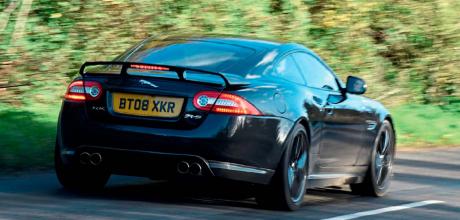Uprated 561bhp 2008 Jaguar XKR Coupe X150
Straight and narrow. We find a neatly upgraded XKR which takes inspiration from Jaguar’s own back catalogue.
WORDS PAUL WAGER
PHOTOGRAPHY PAUL WALTON
UPRATED 561bhp XKR Better than the XKR-S X150?
We sample a neatly uprated X150 which takes inspiration from the XKR-S and may just be the better road car.
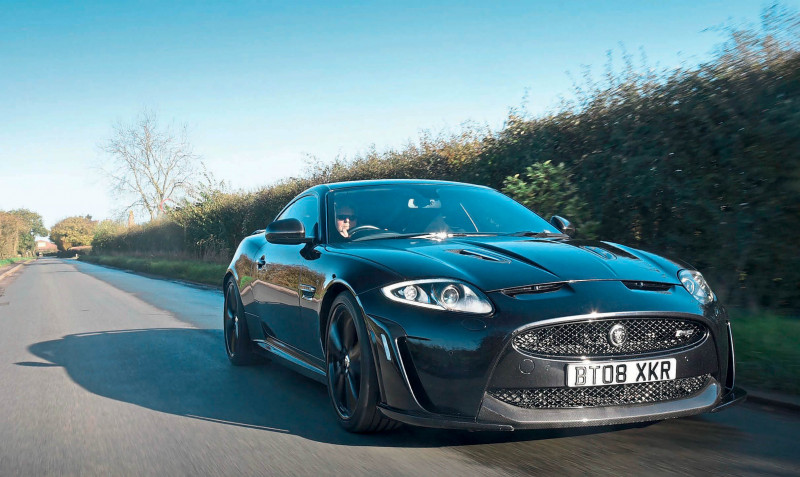
After the reams of text which have been published around the automotive world this year commemorating the centenary of Jaguar Cars, you could probably be forgiven for feeling pretty well clued-up on the firm’s motorsport history. From XKs powering to victory in 1950s European rallying to C-Types at Le Mans and on through the wide-arched XJ-C to the XJR racers of the modern era, it’s all pretty well documented. What you won’t have read too much about though is Jaguar’s place in the history of drag racing but this month we’ve been lucky enough to meet a man who took Jaguar’s XK engine to the top of A the tree in a sport more often dominated by American iron. And as you can see from our photos, Brian Thomas is still very much in tune with the idea of going very fast behind a Jaguar engine.
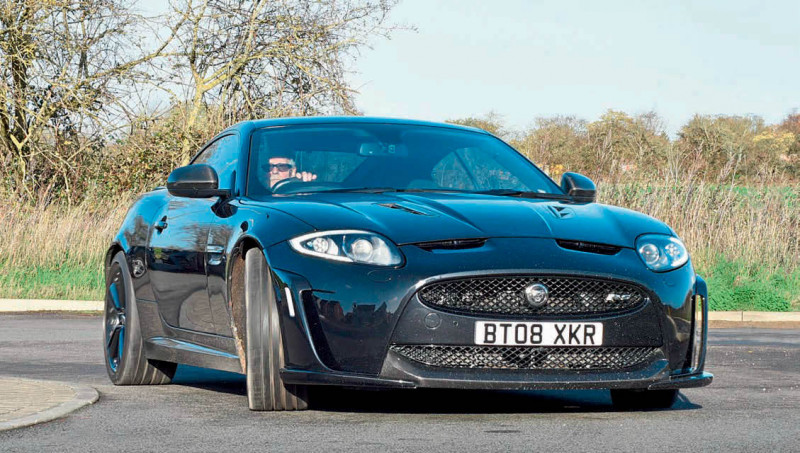
Brian’s enthusiasm for Jaguar goes right back to his teenage years when as a young apprentice fabricator welder one of his duties was to clean the boss’s Mk2 twice weekly. That the car’s owner kept a set of winter studded tyres in the stores and frequently campaigned the car in the Monte Carlo rally illustrated the potential of the XK engine, something Brian would remember a good few years later.
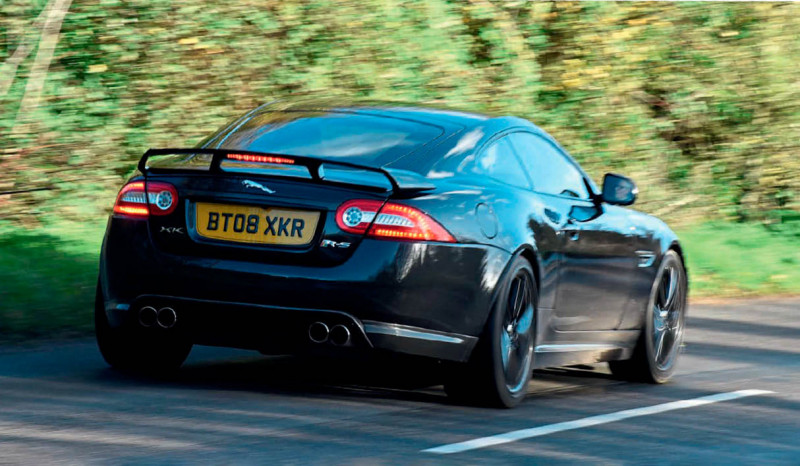
A decade later he found himself attending a drag racing meet at Santa Pod Raceway where he noticed that many of the entrants were using Jaguar straight-six engines. It may seem like an odd choice these days but those of us who can still recall the 1970s will remember just how common time-expired Jaguar saloons were back then, littering both the free ads and the oily mud of your local breakers. They were also cheap enough for budget-minded competitors to buy an entire car just for the engine, which responded well to basic tuning and in a suitably lightweight chassis made for a competitive entry.
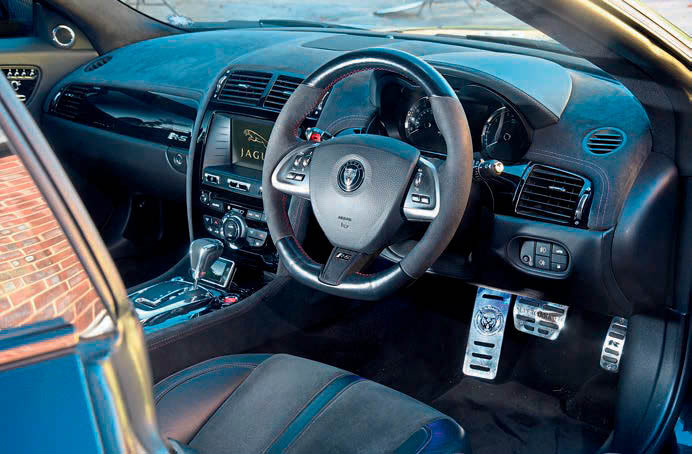
Our man was quickly hooked on the sport and after a couple of years spectating, decided to build his own car. “It was a bit of a flying bedstead,” he laughs, but as he gained experience in building and driving Jaguar-powered racers, the quarter-mile times started to tumble. You can read the full story in our side panel but ultimately Brian rose to the top of the sport in the UK thanks to the XK engine, which means it’s unsurprising that in recent years there’s generally been a Jaguar road car on the driveway at home. These have included X-Types in both 2.5 and 3.0-litre forms, plus a 3.0-litre S-Type and it was while taking the latter for a service that he was struck by the sight of an XKR in the showroom.
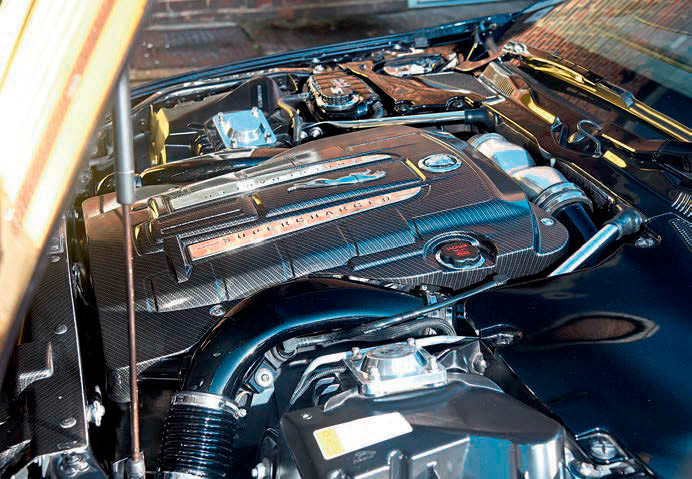
What he didn’t realise at the time was that this was one of the limited-edition XKR400 cars, built to celebrate the 400bhp output of the 4.2-litre supercharged engine.
There’s a laminated rolling road chart in the car ready to wave in front of any doubters
Limited to 100 examples sold only in the UK (split between 60 coupes and 40 convertibles), this included the 20-inch BBS Montreal rims, upgraded Brembo brakes and revised suspension with different damper settings and lower springs. On the inside, the XKR400 gained a chrome shifter surround, Momo shift knob, alcantara seats and piano black fascia trims as well as an R Performance steering wheel and drilled aluminium pedals.
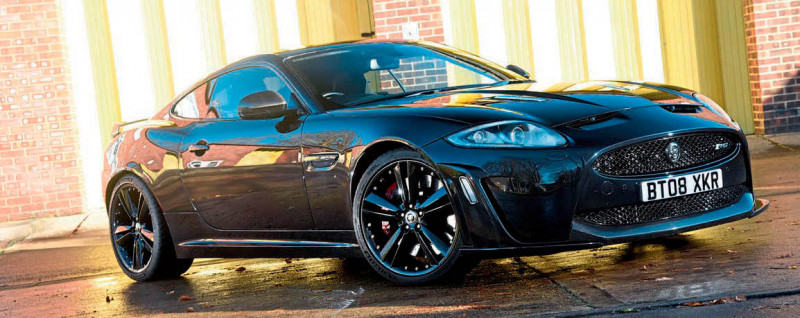
Ultimately that proved to be a pretty costly service visit, since in short order the S-Type was traded for the special edition XKR, which proved to be everything Brian was expecting. By then, he had retired from the quarter-mile to concentrate on running his own business, so the supercharged punch of the XKR over the S-Type was no doubt appreciated.
Brian rose to the top of the sport in the UK thanks to the XK engine
Membership of the XK Enthusiasts’ Club duly followed and Brian became a firm fan of the X100 model. So much so in fact that he’d always regarded the 400 as a ‘keeper’… until, that is, the all-new aluminium-bodied car appeared on the scene.
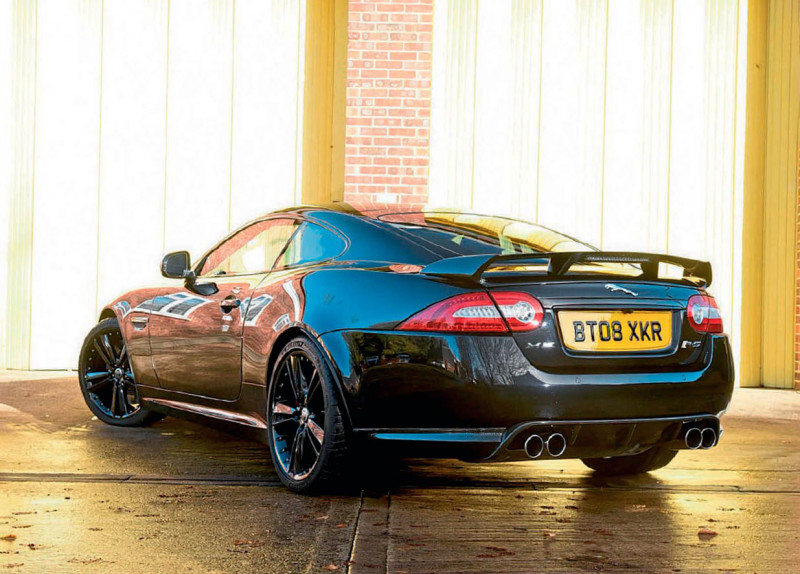
In a story familiar to many of us, after a good look at the second-generation XKR it wasn’t long before Brian was trading the 400 in for the new model, in the shape of the 2008 car you see here.
One of the later 4.2-litre cars, it proved to be everything the older XKR was, with an added layer of refinement. Indeed, the standard package was so good that Brian initially had no plans to alter it from showroom spec but as you can see from our photos, that was a short-lived idea, especially when Steve at Cotswold Automotive Parts kept tempting him with rare special components.
The first upgrade was a set of the R-logo’d six-pot Alcon front calipers, 400mm discs and matching four-pot rears which were offered as a costly option at the time. The bigger discs meant a move to the larger Vortex wheels, which were joined by the front lip spoiler and rear lower diffuser as fitted to the XKR-S, a conversion to the later LED lights finishing off the updated look.

The next task was a replacement full leather interior, but before long the seats were replaced again by a pair of sports seats from the XKR-S, again courtesy of Cotswold Automotive Parts. It’s thought that when the limited-edition GTs were built, they were created using standard-spec XKR-S’s, which meant that when the GT’s racing buckets were fitted the standard S-spec items found their out to the market.
This wasn’t to be the final look for the interior, though. One of the things Brian had liked most about the XKR400 was the alcantara interior and since he’d already had an alcantara headlining fitted, he took the plunge to have the rest of the cabin trimmed in the XKR400 style to match. And it was a pretty big plunge, too: dashboard, door cards, centre console and seats were all retrimmed in leather and alcantara and a beautiful job it is, too. Even the shift knob has been given the alcantara treatment and if you didn’t know then you’d assume it was a rare factory option, it’s that neat.

At the same time, the dash vents, door switch surrounds and other fascia panels were changed to piano black; a specialist powder-coating process, it’s another subtle mod which looks like a factory part. Completing the transformation is a flat-bottomed steering wheel, modified by a specialist from a standard part and naturally trimmed in alcantara. Brian wasn’t done yet, though, with the second round of exterior modifications involving a complete XKR-S body kit. This involved a complete front bumper assembly with new headlamps and front wings to suit, carbon fibre spoiler, sill covers, rear diffuser and carbon-fibre tailgate spoiler.
To the standard kit, Brian then added carbon fibre bonnet vents, mirror caps, front wing vent surrounds and side trims for the lower rear diffuser – that last item being a custom-made part.
At this point even the big Vortex rims were overwhelmed, so they were sent on their way, replaced by a set of gloss black Kalimnos 20-inchers which sit on 20mm spacers front and 25mm rear to provide just the right stance.
Helping them to fill the arches neatly is a set of XKR-S springs which lower the car by 10mm, but rather than swap to the complete S suspension, Brian’s retained the standard XKR dampers to avoid creating a harsh set-up and it’s something which works really well to retain that trademark Jaguar ride quality.
Naturally, under the bonnet there are plenty of other details including polished strut top covers, polished and engraved manifold and a hydro-dipped carbon-effect engine cover paired with gloss black induction pipework and bulkhead plastics. So, plenty of show then… and, as it turns out, not inconsiderable go either thanks to the efforts of Dynotech RS in Farringdon, Oxfordshire.
It was here that the supercharger nose was removed and modified to accept a 10% smaller overdrive pulley, the result being that the unit is spun faster and consequently produces more boost, with a remap to suit. Waterless coolant and an uprated pump in the inlet charge-cooler system helps keep a lid on charge temperatures and at the other end of the combustion process, you’ll find free-flowing sports catalysts in the exhaust system which has also had the centre silencers replaced by a siamese section.
On Dynotech’s rolling road, the result was a credible 561bhp at 5500rpm, with a mammoth 604lb.ft (819.3Nm) torque at 3550rpm, which lifts Brian’s 4.2-litre XKR even above the 5-litre XKR-S. As he points out, this kind of power from the smaller engine is virtually unheard-of and probably explains why there’s a laminated rolling road chart in the car ready to wave in front of any doubters.
Having sampled the car though, there’s no doubting from any of us here at JW. The uplift in performance over the ‘regular’ 400bhp XKR is immediately noticeable, especially its mid-range response thanks to that mighty torque but perhaps even more impressive is the unspoiled refinement. Over the years I’ve sampled plenty of modified cars from the laggy 500bhp Sierra Cosworths of the late 90s to big-power BMWs from German tuners, but it’s unusual to find one which remains this docile. Indeed, it’s quite happy pootling through Oxfordshire villages at a 20mph speed limit and to avoid upsetting the neighbours Brian’s also fitted a neat switch to control the valve in the exhaust and regulate noise levels. As standard it’s controlled by the engine electronics to keep the car quiet at urban speeds but it’s easy to wire in a manual override and when there's no need to keep the noise down, it sounds really purposeful even just off idle.
Needless to say, we were impressed by the attention to detail which went into creating a Jaguar which is at once a unique personal vision yet also uses so many production parts, but is he finished yet? We're not sure: as the XKR squirmed under acceleration on the greasy November road surface, I'm sure I heard him mention something about a Quaife diff.
STRAIGHT LINES
Getting more power from Jaguar engines isn’t a new thing for Brian, who started his drag racing career in the ’70s using a self-built car and Jaguar XK engine – popular among drag racers back then as it was powerful, easy to source and, crucially, cheap.
After Brian had noticed that the winning Jaguar-engined cars were using engines built by Tester Racing, Brian acquired one of their full race cylinder heads for his second drag car and promptly set a new record in the Competition Altered class. A third car followed, by which time Brian was working closely with Jim Tester and the partnership produced countless race and championship wins.
Sadly, Jim would pass away a few years later, but not before he’d passed on his XK tuning secrets to Brian who combined the knowledge with the introduction of nitrous oxide injection to produce a fitting legacy: an 8.77-second quarter at 156mph, a record for a six-cylinder Jaguar-powered car. That record still stands today and as a nice footnote, Brian’s still in touch with Jim’s son who runs Tester Racing today.
If you want to see Brian in action, search YouTube for ‘Santa Pod Paranoia’ or click to youtu.be/THdUMMM2cZ0
XKR-S springs lower the car by 10mm but keeping the original dampers preserves the ride quality.
Kalimnos wheels are needed to clear the big Alcon calipers. Body styling uses genuine XKR-S parts.


